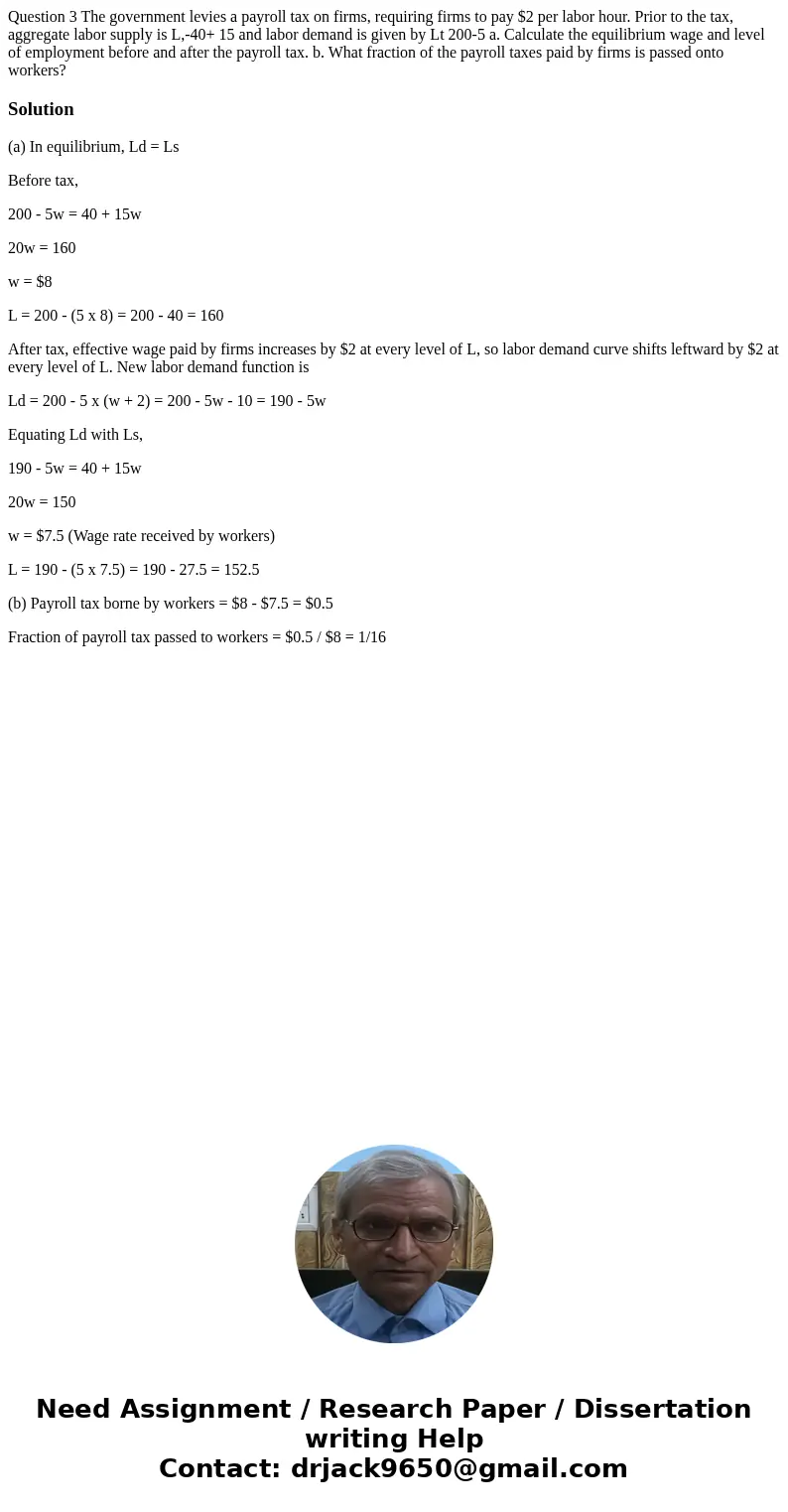Question 3 The government levies a payroll tax on firms requ
Question 3 The government levies a payroll tax on firms, requiring firms to pay $2 per labor hour. Prior to the tax, aggregate labor supply is L,-40+ 15 and labor demand is given by Lt 200-5 a. Calculate the equilibrium wage and level of employment before and after the payroll tax. b. What fraction of the payroll taxes paid by firms is passed onto workers? 
Solution
(a) In equilibrium, Ld = Ls
Before tax,
200 - 5w = 40 + 15w
20w = 160
w = $8
L = 200 - (5 x 8) = 200 - 40 = 160
After tax, effective wage paid by firms increases by $2 at every level of L, so labor demand curve shifts leftward by $2 at every level of L. New labor demand function is
Ld = 200 - 5 x (w + 2) = 200 - 5w - 10 = 190 - 5w
Equating Ld with Ls,
190 - 5w = 40 + 15w
20w = 150
w = $7.5 (Wage rate received by workers)
L = 190 - (5 x 7.5) = 190 - 27.5 = 152.5
(b) Payroll tax borne by workers = $8 - $7.5 = $0.5
Fraction of payroll tax passed to workers = $0.5 / $8 = 1/16

 Homework Sourse
Homework Sourse